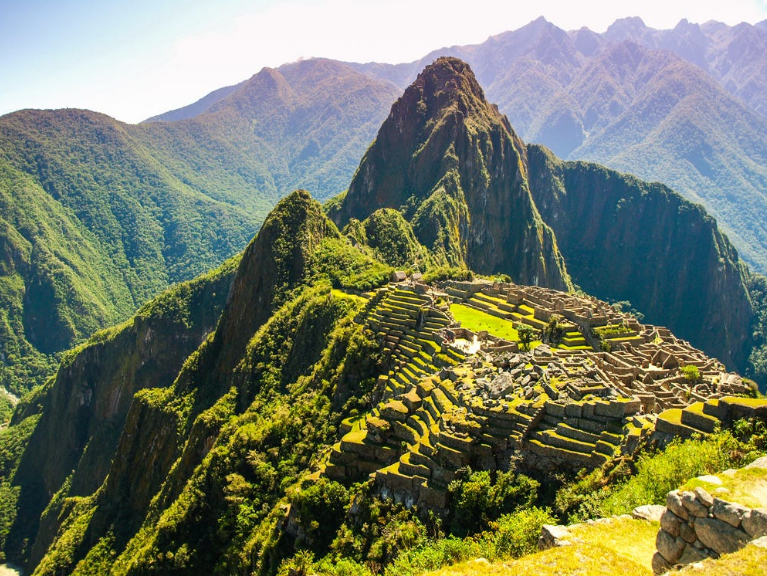Golden Triangle Tour with Ranthambore: A Heritage-Wildlife Route

Introduction to the Golden Triangle Tour with Ranthambore
The golden triangle tour with Ranthambore offers a well-balanced itinerary that blends India’s cultural richness with thrilling wildlife encounters. Covering the iconic cities of Delhi, Agra, and Jaipur, this route gets its name from the triangular shape it forms on the map. When combined with a visit to Ranthambore National Park, the tour becomes more than just historical sightseeing—it evolves into a journey through nature, history, and Indian traditions.
This travel route suits both first-time visitors and those wanting to go beyond the usual urban experience. Ranthambore adds depth to the journey, providing a pause from city life with its forests and chances to spot tigers in their natural environment. The combination of architecture, wildlife, and local life makes this itinerary memorable.
Start with Delhi: A Gateway to the Golden Triangle Tour with Ranthambore
Delhi sets the tone with its deep historical background and evolving modern lifestyle. As the starting point of the golden triangle tour with Ranthambore, Delhi introduces travelers to India’s layered past.
Must-visit attractions in Delhi:
- Red Fort: A UNESCO World Heritage Site showcasing Mughal power.
- India Gate: A war memorial surrounded by lush lawns.
- Qutub Minar: One of the tallest minarets in the world, built with Indo-Islamic architecture.
- Lotus Temple and Akshardham Temple: Icons of spiritual India and modern design.
The narrow lanes of Chandni Chowk offer a glimpse into Old Delhi’s essence. The street food, bazaars, and centuries-old shops form a vital part of the experience. Delhi is also a hub for handicrafts, textiles, and cultural events, setting a perfect opening for the tour.
Agra: The Symbol of Eternal Grandeur
From Delhi, the next point in the golden triangle tour with Ranthambore is Agra. Known globally for the Taj Mahal, Agra is far more than just this iconic monument. The city has a deep connection with the Mughal era, and many historical structures still carry that legacy.
Key sites in Agra:
- Taj Mahal: A symbol of love made entirely of white marble.
- Agra Fort: Once a stronghold of the Mughal Empire.
- Mehtab Bagh: A garden complex offering a unique view of the Taj across the Yamuna.
- Itimad-ud-Daulah’s Tomb: Often referred to as the “Baby Taj.”
Visitors are often surprised by the depth of architectural artistry and Mughal engineering in Agra. The city also offers fine examples of marble inlay work, carpet weaving, and local sweets such as petha.
Ranthambore National Park: The Wildlife Break
The true twist in the golden triangle tour with Ranthambore lies in this stretch. Unlike the other three locations known for monuments and markets, Ranthambore provides raw nature. It offers a refreshing and thrilling escape into the wild heart of Rajasthan.
Highlights of Ranthambore:
- Royal Bengal Tigers: One of the best places in India to spot them.
- Jungle Safaris: Conducted in open jeeps and canters for a closer look at flora and fauna.
- Ranthambore Fort: A historic hilltop fort overlooking the park.
- Padam Talao and Jogi Mahal: Popular spots within the park for photography and bird-watching.
The park is also home to leopards, sloth bears, crocodiles, hyenas, and hundreds of bird species. The mix of dry deciduous forest and open grassy meadows ensures unique landscape variety.
Ranthambore serves as a calm yet exciting break between Agra and Jaipur. It adds nature to a culturally driven tour, making the journey more dynamic.
Jaipur: The Royal End of the Golden Triangle Tour with Ranthambore
The final stop of the golden triangle tour with Ranthambore is Jaipur, the capital city of Rajasthan. Known as the Pink City, Jaipur introduces travelers to Rajput architecture, local markets, and desert lifestyle.
Key attractions in Jaipur:
- Amber Fort: A majestic fort with elephant rides and Sheesh Mahal (mirror palace).
- City Palace: A royal residence turned museum and cultural hub.
- Hawa Mahal: A five-story façade designed for royal women to observe street life.
- Jantar Mantar: An astronomical observatory and a UNESCO World Heritage Site.
In Jaipur, travelers often get involved in shopping for block-printed fabrics, traditional jewelry, and blue pottery. The street food in the form of kachori, ghewar, and dal baati churma provides a taste of Rajasthan’s rich culinary traditions.
Ideal Itinerary for the Golden Triangle Tour with Ranthambore
Here’s a sample route to follow if you’re planning the golden triangle tour with Ranthambore:
- Day 1: Arrival in Delhi and local sightseeing.
- Day 2: Continue Delhi tour and drive to Agra.
- Day 3: Visit Taj Mahal at sunrise, explore Agra Fort, and depart for Ranthambore.
- Day 4: Morning and evening jungle safari in Ranthambore.
- Day 5: Travel to Jaipur and begin city tour.
- Day 6: Full-day Jaipur sightseeing.
- Day 7: Return to Delhi or depart from Jaipur airport.
This structure allows sufficient time in each city without feeling rushed. You get to appreciate the historical depth and wildlife diversity without missing out on regional experiences.
Travel Tips for Golden Triangle Tour with Ranthambore
When embarking on the golden triangle tour with Ranthambore, certain practical details can help ensure a smoother trip:
- Best Time to Visit: October to April. This season is suitable for both wildlife viewing and city exploration.
- Safari Booking: Book jeep safaris in advance through the official forest department website.
- Clothing: Light cottons for Delhi and Agra; neutral tones for jungle safaris; and breathable attire for Jaipur’s dry heat.
- Transport: Road travel is common, but private cars or luxury coaches are preferred for comfort. Trains also connect these cities well.
- Entry Tickets: All major monuments require entry tickets. Some offer online bookings, which save time.
- Guides: Consider hiring government-approved guides at each location for a deeper understanding of the sites.
Cultural Immersion During the Tour
The golden triangle tour with Ranthambore is not just about ticking off places. Every region has its own culture, and observing these makes the trip feel real.
- In Delhi, language diversity and street culture dominate.
- In Agra, Mughal hospitality and storytelling flourish.
- In Ranthambore, rural life and forest rituals hold importance.
- In Jaipur, Rajasthani folk dances, puppet shows, and art forms like miniature painting are still practiced.
For those seeking cultural interactions, opt for local homestays, food walks, or art village visits along the way.
Why the Golden Triangle Tour with Ranthambore Stands Out
The combination of heritage and wilderness is what makes this route unique. Most tours offer only cities or only nature, but this one blends both seamlessly.
Benefits of this route:
- Balanced Itinerary: Offers architecture, wildlife, tradition, and modern comfort.
- Family-Friendly: Works for families, solo travelers, or couples.
- Photography Heaven: From monuments to wildlife and vibrant markets.
- Local Cuisine Variety: Try Mughlai in Agra, forest-inspired food in Ranthambore, and Rajasthani dishes in Jaipur.
The golden triangle tour with Ranthambore suits those looking for a broader image of India within a short span. You won’t need to compromise on either cultural depth or natural beauty.
Final Thoughts
The golden triangle tour with Ranthambore is a powerful combination of history, architecture, wildlife, and Indian lifestyle. It’s ideal for those who want to go beyond a typical city-hopping itinerary. Whether you’re planning your first trip to India or revisiting to deepen your travel experiences, this route creates lasting impressions.
It gives you the grandeur of empires, the thrill of jungle life, and the color of local traditions—all within one journey. For travelers seeking a route that touches multiple aspects of India without long-haul travel, this tour remains unmatched.








